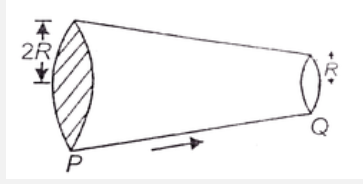A stream of ......... moving through a conductro xonstitues,electric current
Step-by-Step Solution:
1. Understanding Electric Current: Electric current is defined as the flow of electric charge. In most conductors, this charge is carried by electrons.
2. Identifying the Conductor: A conductor is a material that allows the flow of electric charge. Common examples include metals like copper and aluminum.
3. Movement of Charge Carriers: In a conductor, when a potential difference (voltage) is applied, the electrons (which are negatively charged) start to move. This movement of electrons constitutes the electric current.
4. Direction of Current: Although electrons move from the negative terminal to the positive terminal, by convention, the direction of electric current is taken as the direction of positive charge movement, which is opposite to the flow of electrons.
5. Conclusion: Therefore, the answer to the question is that a stream of electrons moving through a conductor constitutes electric current.
Final Answer: A stream of electrons moving through a conductor constitutes electric current.
---
Topper's Solved these Questions
Similar Questions
Electric current is passing through a solid conductor PQ from P to Q. The electric current densities at p and Q are in the ratio.

View SolutionWith the help of a diagram, describe an experiment to show that a change in current flowing through a coil induces an electric current in a neighbouring coil.
View Solution
Knowledge Check
When no current is passed through a conductro
Athe free electrons do not moveBthe average thermal velocity of a free electron over a large period of time is zeroCthe average of thermal velocities of all the free electrons at an instant is zeroD(b) and (c) bothThe current flowing in two coaxial coils in the same direction. On increasing the distance the two, the electric current will
Aremain unalteredBincreases in one and decreases in the secondCincrease in bothDdecrease in bothThrough a semiconductor, an electric current is due to drift of
AFree electronsBFree electrons and holesCPositive and negative ionsDProtons
With the help of a diagram describe an experiment to show that a change in current flowing through a coil induces an electric current in a neighbouring coil.
View SolutionWith the help of a diagram, describe an experiment to show that a change in current flowing through a coil induces an electric current in a neighbouring coil.
View SolutionThrough which of the following does electric current not flow ?
View SolutionWhen an electric current is passing through a conductor, there is no electric field produced because the conductor is
View SolutionThrough which of the following does electric current not flow?
View Solution
